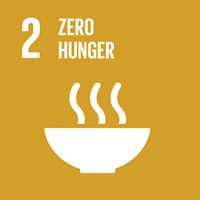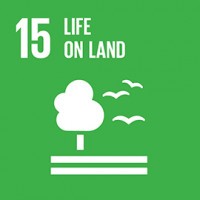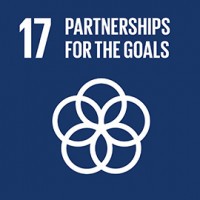
Research: Combating dryland degradation
Helping to halt the degradation of global drylands by 2030.
Summary
Research Summary
Drylands are one of the most important ecosystems in the world: they cover 40% of the Earth’s land surface, are home to more than 2 billion people, contain 50% of the world’s livestock and produce 45% of the crops.
But drylands face increasingly acute threats from the over-use of resources, poor management, and a changing climate. Some of these ecosystems are incredibly fragile and even minor alterations in conditions can result in dramatic changes in ecology – and hence human well-being.
UN Sustainable Development Goal (SDG) 15.3 sets a target for Land Degradation Neutrality (LDN) by 2030. Researchers at Manchester Met are involved in several large-scale projects that are compiling baseline data on the current state of ecosystem health and extent of habitat degradation. Accurate baseline data will enable governments and NGOs to monitor progress towards the target.
Over the past two decades our team members have received funding from the European Commission (Projects: Mapping, monitoring and modelling land use, LanDDApp, PantEOn, SAVEO) and the Leverhulme Trust (Project ‘SCALE’) to develop state-of-the-art remote sensing tools and methods to monitor degradation rates.
These tools, including a highly accurate approach to land cover mapping, and a land degradation early warning system, are being used by scientists, environmental managers and policy makers to monitor progress on environmental protection and human development goals, alike.
For example, through the EU-funded LanDDApp project we were able to map the density and encroachment of woody vegetation in the Northwest Province of South Africa. The research showed that, due to climate warming and the subsequent effect of carbon fertilisation, bushes are increasingly invading grasslands across this region.
Research impact
The LanDDApp analysis has helped to change land management practices including fire suppression practices, stocking densities, invasive species control and eradication.
Crop yields on small-scale, subsistence farms have improved by more than 20% in some localities in the western part of the Province. By using land and water resources more sustainably, and balancing grazing pressures on land, the farms have also reduced their greenhouse gas emissions by up to 15%.
These changes have improved the amount and quality of land resources available, which is helping to support ecosystem services and enhance food security (e.g. the palatable grasses needed to feed local pastoralists’ animals). These outcomes are directly contributing to the fight for Land Degradation Neutrality by 2030 (SDG 15.3), and indirectly to help eradicate poverty and hunger in the region (SDGs 1 and 2).
Sustainable development goals
Delivering sustainable development

No poverty

Zero hunger

Life on land

Partnerships for the goals
Research outputs
- Calvo-Cases, A., Arnau-Rosalén, E., Boix-Fayos, C., Estrany, J., Roxo, M.J., Symeonakis, E. 2021. Eco-geomorphological connectivity and coupling interactions at hillslope scale in drylands: Concepts and critical examples. Journal of Arid Environments, 186, 104418
- Borges, J., Higginbottom, T.P., Symeonakis, E., Jones, M. 2020. Sentinel-1 and sentinel-2 data for savannah land cover mapping: Optimising the combination of sensors and seasons. Remote Sensing, 12 (23), art. no. 3862, pp. 1-21.
- Symeonakis, E., Korkofigkas, A., Vamvoukakis, G., Stamou, G., Arnau-Rosalén, E. 2020. Deep learning monitoring of woody vegetation density in a South African savannah region. International Archives of the Photogrammetry, Remote Sensing and Spatial Information Sciences - ISPRS Archives, 43 (B3), pp. 1645-1649.
- Higginbottom, T.P., Symeonakis, E. Identifying ecosystem function shifts in Africa using breakpoint analysis of long-term NDVI and RUE data. (2020) Remote Sensing, 12 (11), art. no. 1894.
- Smetanová, A., Nunes, J.P., Symeonakis, E., Brevik, E., Schindelwolf, M., Ciampalini, R. 2019. Mapping and modelling soil erosion to address societal challenges in a changing world. Land Degradation and Development.
- Symeonakis, E., Higginbottom, T.P., Petroulaki., K. Rabe, A. 2018. Optimisation of Savannah Land Cover Characterisation with Optical and SAR Data. Remote Sensing, 10(4), 499
- Higginbottom, T.P., Symeonakis, E., Mayer, H. van der Linden, S., 2018. Mapping Woody Cover in Semi-arid Savannahs using Multi-seasonal Composites from Landsat Data. ISPRS Journal of Photogrammetry and Remote Sensing 139, 88-102
Team
Funding
With funding from

Leverhulme Trust

Marie Sklodowska-Curie Actions
Contact
Contact us
For general enquiries, please contact research group leads Dr David Megson and Dr Sanja Potgieter-Vermaak.
